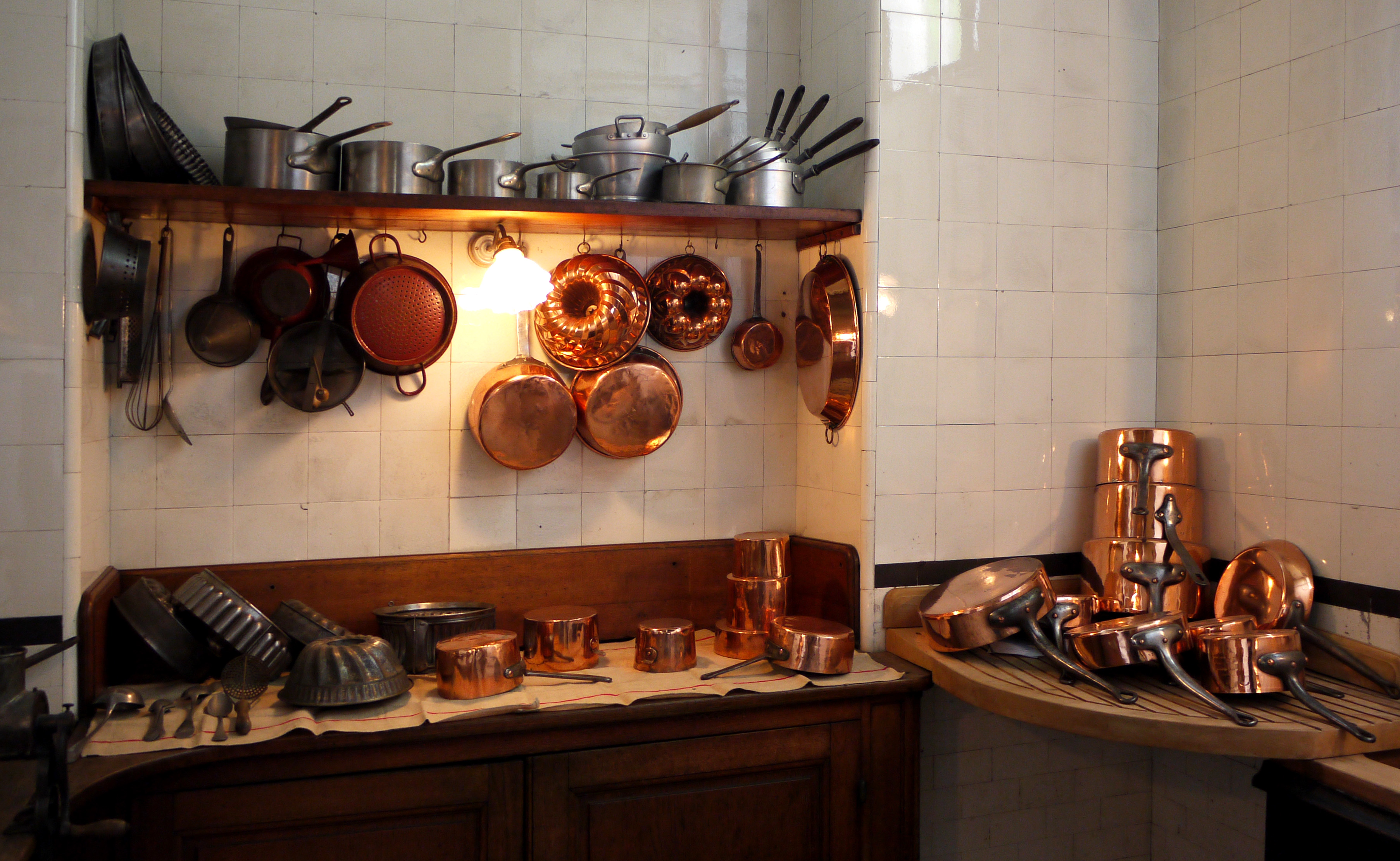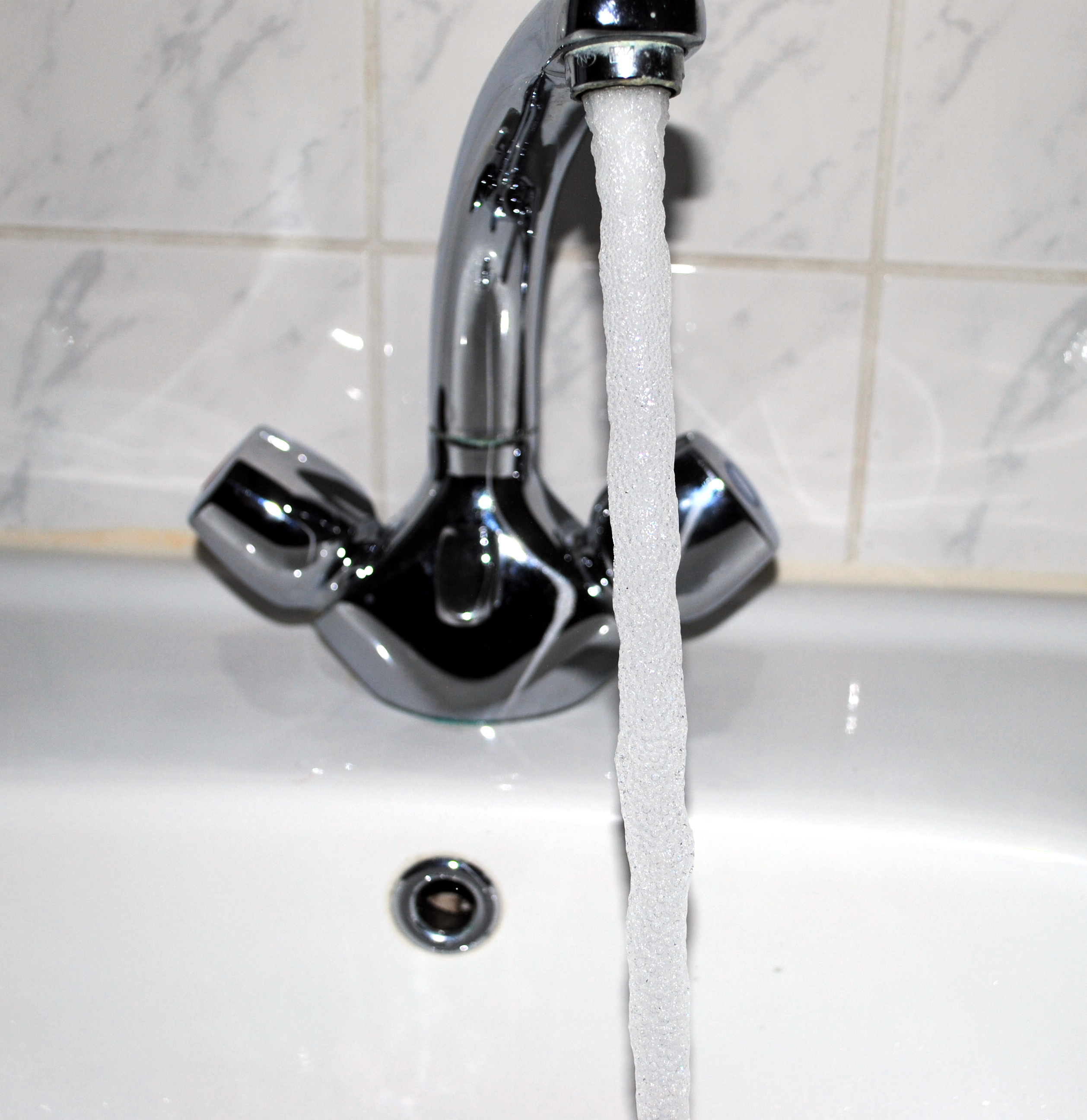|
Whisk
A whisk is a cooking utensil which can be used to blend ingredients smooth or to incorporate air into a mixture, in a process known as '':wikt:whisk, whisking'' or '':wikt:whipping, whipping''. Most whisks consist of a long, narrow handle with a series of wire loops joined at the end. The loops can have different shapes depending on a whisk's intended functions. The wires are usually metal, but some are plastic for use with nonstick cookware. Whisks are also made from bamboo. Whisks are commonly used to whip egg whites into a firm foam to make meringue, or to whip cream into whipped cream. Etymology The word ''whisk'', given its similarity to equivalent words in modern Scandinavian languages, was probably borrowed from Old Norse. It had early use in the Scots language as and . History Bundles of twigs, typically apple, have long been used as whisks; often the wood used would lend a certain fragrance to the dish. An 18th-century Shakers, Shaker recipe calls to "Cut a handfu ... [...More Info...] [...Related Items...] OR: [Wikipedia] [Google] [Baidu] |
Mixer (cooking)
A mixer (also called a hand mixer or stand mixer depending on the type) is a kitchen device that uses a gear-driven mechanism to rotate a set of "beaters" in a bowl containing the food or liquids to be prepared by mixing them. Mixers help automate the repetitive tasks of stirring, whisking or beating. When the beaters are replaced by a ''dough hook'', a mixer may also be used to knead. A mixer may be a handheld mechanism known as an eggbeater, a handheld motorized beater, or a drill mixer. Stand mixers vary in size from small counter top models for home use to large capacity commercial machines. Stand mixers create the mixing action by either rotating the mixing device vertically (planetary mixers), or by rotating the mixing container (spiral mixers). History The mixer with rotating parts was patented in 1856 by Baltimore, Maryland, tinner Ralph Collier. This was followed by E.P. Griffith's whisk patented in England in 1857. Another hand-turned rotary egg beater was patente ... [...More Info...] [...Related Items...] OR: [Wikipedia] [Google] [Baidu] |
Meringue
Meringue ( , ) is a type of dessert or candy, of French cuisine, French origin, traditionally made from Whisk, whipped egg whites and sugar, and occasionally an acid, acidic ingredient such as lemon, vinegar, or potassium bitartrate, cream of tartar. A binding agent such as salt, flour or gelatin may also be added to the eggs. The key to the formation of a good meringue is the formation of wikt:stiff peaks, stiff peaks by Denaturation (biochemistry), denaturing the protein ovalbumin (a protein in the egg whites) via mechanical shear. They are light, airy, and sweet confections. Homemade meringues are often chewy and soft with a crisp exterior, while many commercial meringues are crisp throughout. A uniform crisp texture may be achieved at home by baking at a low temperature () for an extended period of up to two hours. History The ''Oxford English Dictionary'' states that the French word is of unknown origin. The name ''meringue'' for this confection first appeared in print in ... [...More Info...] [...Related Items...] OR: [Wikipedia] [Google] [Baidu] |
Cooking Utensil
A kitchen utensil is a small hand-held tool used for food preparation. Common kitchen tasks include cutting food items to size, heating food on an open fire or on a stove, baking, grinding, mixing, blending, and measuring; different utensils are made for each task. A general purpose utensil such as a chef's knife may be used for a variety of foods; other kitchen utensils are highly specialized and may be used only in connection with preparation of a particular type of food, such as an egg separator or an apple corer. Some specialized utensils are used when an operation is to be repeated many times, or when the cook has limited dexterity or mobility. The number of utensils in a household kitchen varies with time and the style of cooking. A cooking utensil is a utensil for cooking. Utensils may be categorized by use with terms derived from the word " ware": kitchenware, wares for the kitchen; ovenware and bakeware, kitchen utensils that are for use inside ovens and for baking; ... [...More Info...] [...Related Items...] OR: [Wikipedia] [Google] [Baidu] |
Japanese Tea Utensils
are the tools and utensils used in , the Japanese way of tea. Tea utensils can be divided into five major categories: * * * * * A wide range of utensils, known collectively as , is necessary for even the most basic tea ceremony. Generally, items which guests prepare themselves with for attending a gathering are not considered ; rather, the term fundamentally applies to items involved to "host" a gathering. This article, however, includes all forms of implements and paraphernalia involved in the practice of . High-end utensils are cherished, well preserved and documented and serve as historical artifacts. The honorary title is given to the ten artisans that provide the utensils for the events held by the three primary Schools of Japanese tea known as the . Utensils used for are different, using a usually five-piece set of small cups, a small pot and a small cup to pour hot water. These utensils are typically ceramic. Boxes In Japan, cherished items are customaril ... [...More Info...] [...Related Items...] OR: [Wikipedia] [Google] [Baidu] |
Aeration (food)
Aeration (also called aerification or aeriation) is the process by which air is circulated through, mixed with or dissolved in a liquid or other substances that act as a fluid (such as soil). Aeration processes create additional surface area in the mixture, allowing greater chemical or suspension reactions. Aeration of liquids Methods Aeration of liquids (usually water) is achieved by: * passing air through the liquid by means of the Venturi tube, aeration turbines or compressed air which can be combined with diffuser(s) air stone(s), as well as fine bubble diffusers, coarse bubble diffusers or linear aeration tubing. Ceramics are suitable for this purpose, often involving dispersion of fine air or gas bubbles through the porous ceramic into a liquid. The smaller the bubbles, the more gas is exposed to the liquid increasing the gas transfer efficiency. Diffusers or spargers can also be designed into the system to cause turbulence or mixing if desired. Porous ceramic diffusers a ... [...More Info...] [...Related Items...] OR: [Wikipedia] [Google] [Baidu] |
Twirl Whisk
Twirl may refer to: * TWIRL, The Weizmann Institute Relation Locator, a hypothetical hardware device * Twirl (chocolate bar), a brand of chocolate bar manufactured by Cadbury * ''Twirl'' (film), a 1981 movie about baton twirlers starring Erin Moran *Earl Williams (basketball player) (born 1951), American-Israeli basketball player * Angular impulse, the change in angular momentum or the angular analog of impulse See also * Twirling Twirling is a form of object manipulation where an object is twirled by one or two hands, the fingers or by other parts of the body. Twirling practice manipulates the object in circular or near circular patterns. It can also be done indirectly by ... * Spin (other) {{disambiguation ... [...More Info...] [...Related Items...] OR: [Wikipedia] [Google] [Baidu] |
2904cr Traadvisp
9 (nine) is the natural number following and preceding . Evolution of the Hindu–Arabic digit Circa 300 BC, as part of the Brahmi numerals, various Indians wrote a digit 9 similar in shape to the modern closing question mark without the bottom dot. The Kshatrapa, Andhra and Gupta started curving the bottom vertical line coming up with a -look-alike. How the numbers got to their Gupta form is open to considerable debate. The Nagari continued the bottom stroke to make a circle and enclose the 3-look-alike, in much the same way that the sign @ encircles a lowercase ''a''. As time went on, the enclosing circle became bigger and its line continued beyond the circle downwards, as the 3-look-alike became smaller. Soon, all that was left of the 3-look-alike was a squiggle. The Arabs simply connected that squiggle to the downward stroke at the middle and subsequent European change was purely cosmetic. While the shape of the glyph for the digit 9 has an ascender in most modern typefa ... [...More Info...] [...Related Items...] OR: [Wikipedia] [Google] [Baidu] |
Roux
Roux () is a mixture of flour and fat cooked together and used to thicken sauces. Roux is typically made from equal parts of flour and fat by weight. The flour is added to the melted fat or Cooking oil, oil on the stove top, blended until smooth, and cooked to the desired level of Food browning, brownness. A roux can be white, blond (darker), or brown. Butter, bacon drippings, or lard are commonly used fats. Roux is used as a thickening agent for gravy, sauces, soups, and stews. It provides the base for a dish, and other ingredients are added after the roux is complete. Ingredients The fat is most often butter in French cuisine, but may be lard or vegetable oil in other cuisines. Roux is used in three of the five mother sauces of Cuisine classique, classic French cooking: béchamel sauce, velouté sauce, and espagnole sauce. Roux may be made with any edible fat. For meat gravies, fat rendered from meat is often used. In regional Cuisine of the United States, American cuisin ... [...More Info...] [...Related Items...] OR: [Wikipedia] [Google] [Baidu] |
Fouet De Cuisine - échelle
A clapper is a basic form of percussion instrument. It consists of two long solid pieces that are struck together producing sound. They exist in many forms in many different cultures around the world. Clappers can take a number of forms and be made of a wide variety of material. Wood is most common, but metal and ivory have also been used. The plastic thundersticks that have recently come to be popular at sporting events can be considered a form of inflated plastic clapper. Several specific forms of clapper have their own names, such as the Chinese '' guban'', Japanese '' hyoshigi'', or the Korean ''bak''. In the classical music of Thailand, a similar instrument is called ''krap''. In India cooking tongs or ''cimṭā'' are often used to provide rhythm while singing religious hymns in many areas (sometimes tongs made specifically for the purpose are also equipped with bells). In Vietnam, the coin clapper called '' sinh tiền'' is widely used. In medieval French music, clappers ... [...More Info...] [...Related Items...] OR: [Wikipedia] [Google] [Baidu] |




